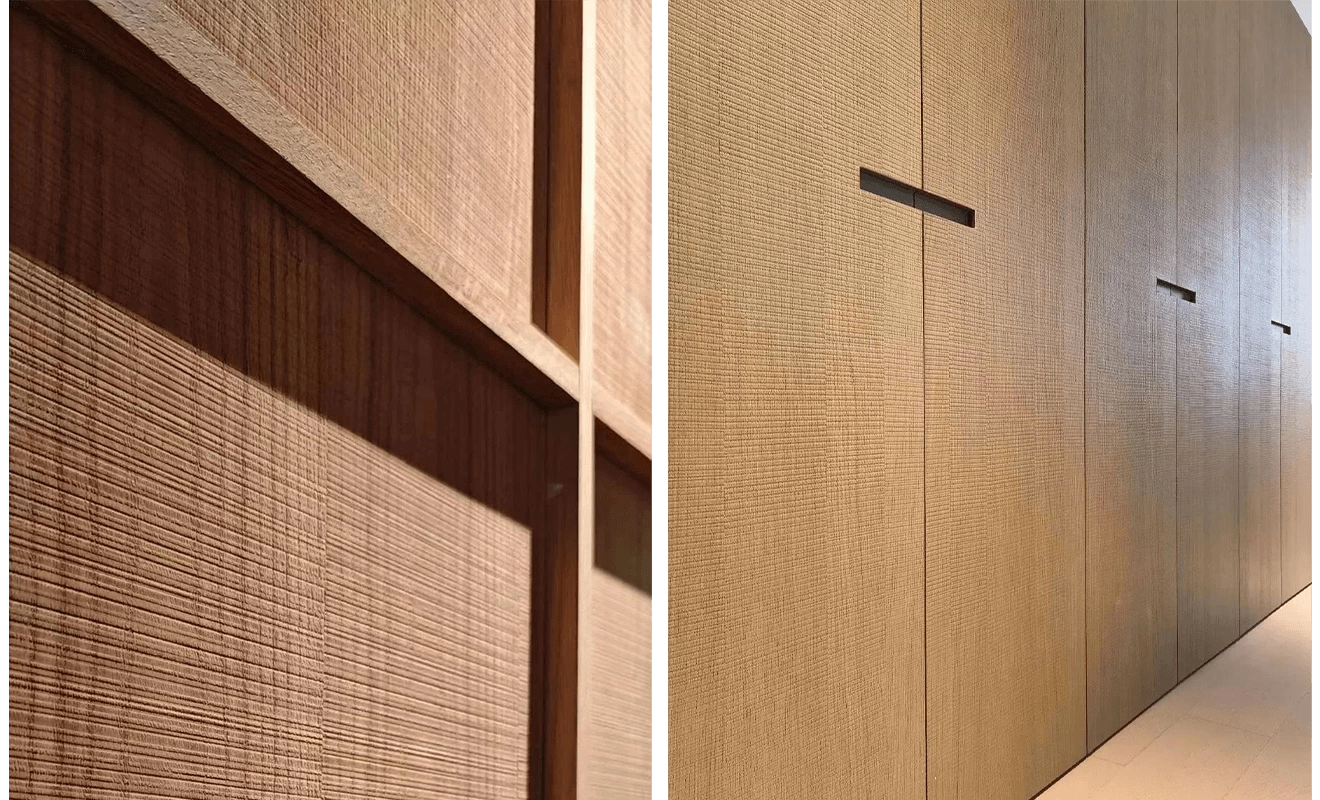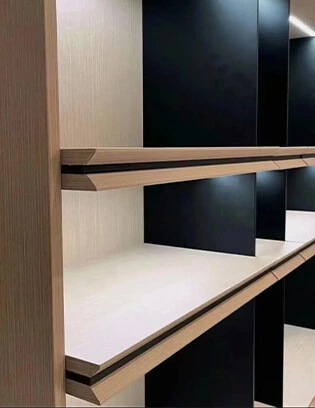9 High-end Millwork Solutions for Home Customization
What gives a luxury interior its soul? Often, it’s the subtle mastery behind the millwork, the kind of detail that doesn’t shout but whispers sophistication. High-end bespoke carpentry is more than just wood—it’s about the fusion of tactile materials, refined textures, and time-honored craftsmanship. Here are nine signature techniques used in custom millwork that bring instant elegance and depth to any living space:
Layered Core Technique (ABA Structure)
This technique involves sandwiching a core panel between two contrasting materials like wood veneer, metal, or acrylic. This results in a visually layered surface with richer dimensionality and texture. By playing with color and pattern, designers can create striking contrasts or harmonious blends. Perfect for shelving, tabletops, or any element where detail deserves the spotlight.
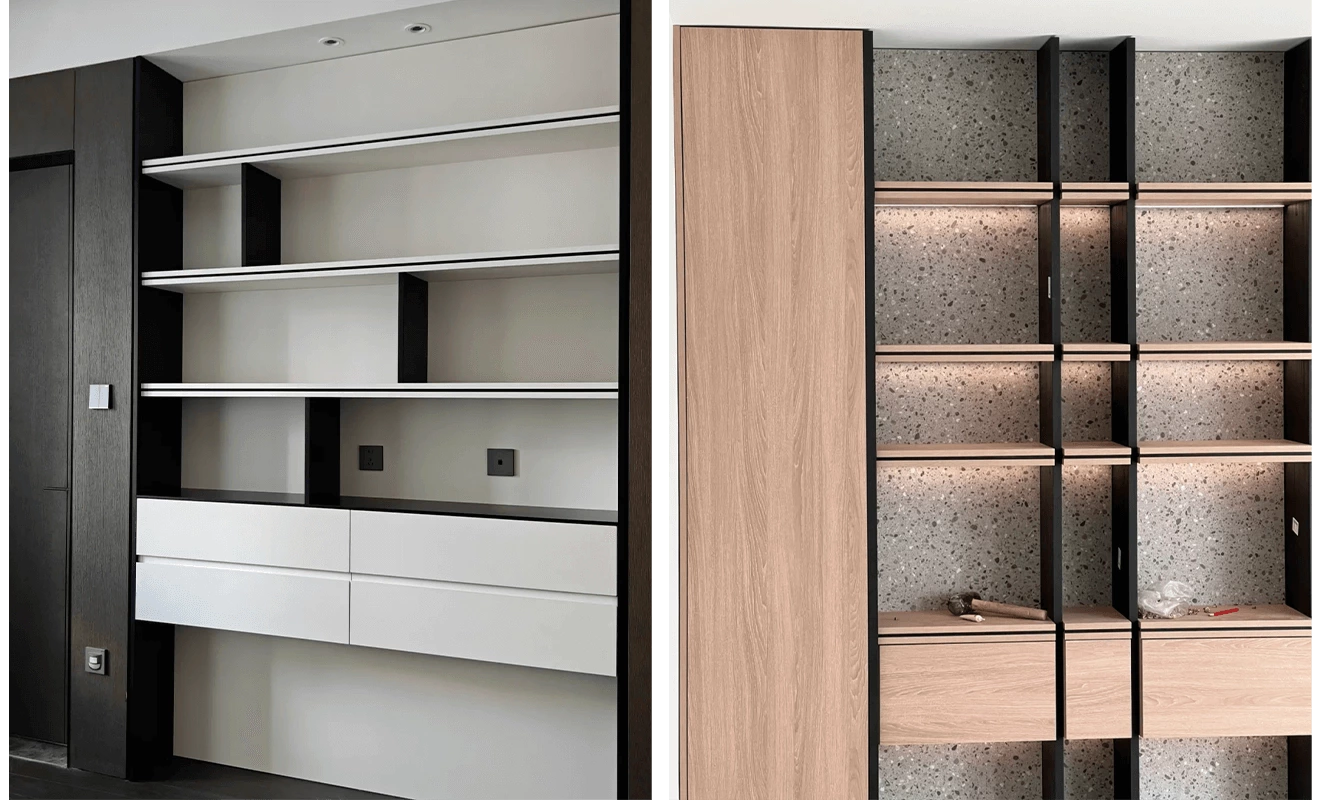
Curved Craftsmanship
Say goodbye to harsh corners. With smooth, sculpted arcs and rounded edges, this technique softens visual lines and invites touch. Curved cabinetry, walls, and doors lend a graceful, almost fluid feel to a space—ideal for modern yet cozy environments. Beyond aesthetics, they’re also safer and more child-friendly. The effect is subtle, but unmistakably elevated.
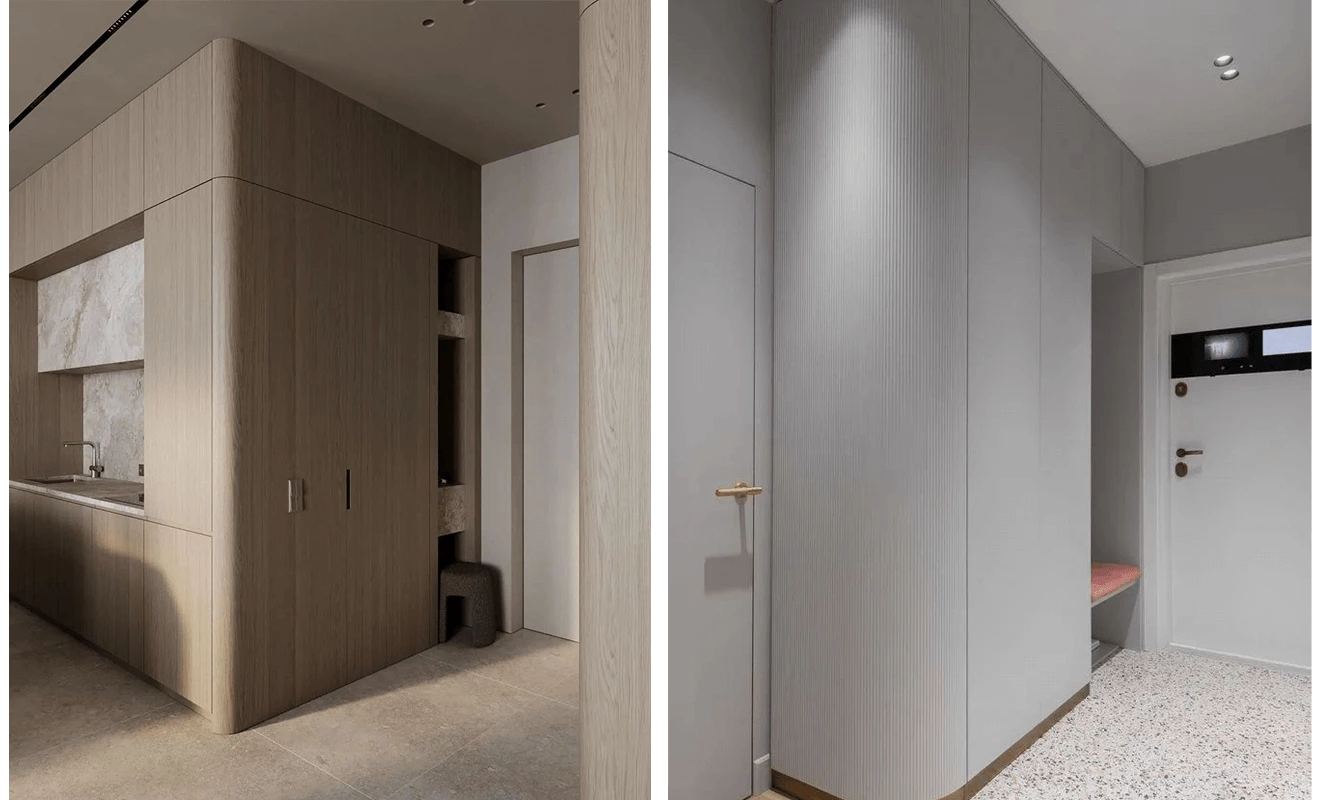
Textured Relief (3D Surface Carving)
Texture tells a story. Through advanced techniques like CNC engraving and precision carving software, wood surfaces are transformed into tactile landscapes—rippled, grooved, or embossed with custom motifs. These textures are more than just visual; they’re made to be touched, bringing a sense of depth and craft to feature walls, cabinet panels, or accent pieces.
Liquid Metal Coating
Why just simulate metal when you can apply the real thing? Liquid metal finishes bond a metallic skin to wood or MDF, delivering both the sheen and weight of solid metal—minus the bulk. Seamless and luxurious, this technique is ideal for doors, staircases, and wall panels that call for a sculptural, industrial-chic vibe.
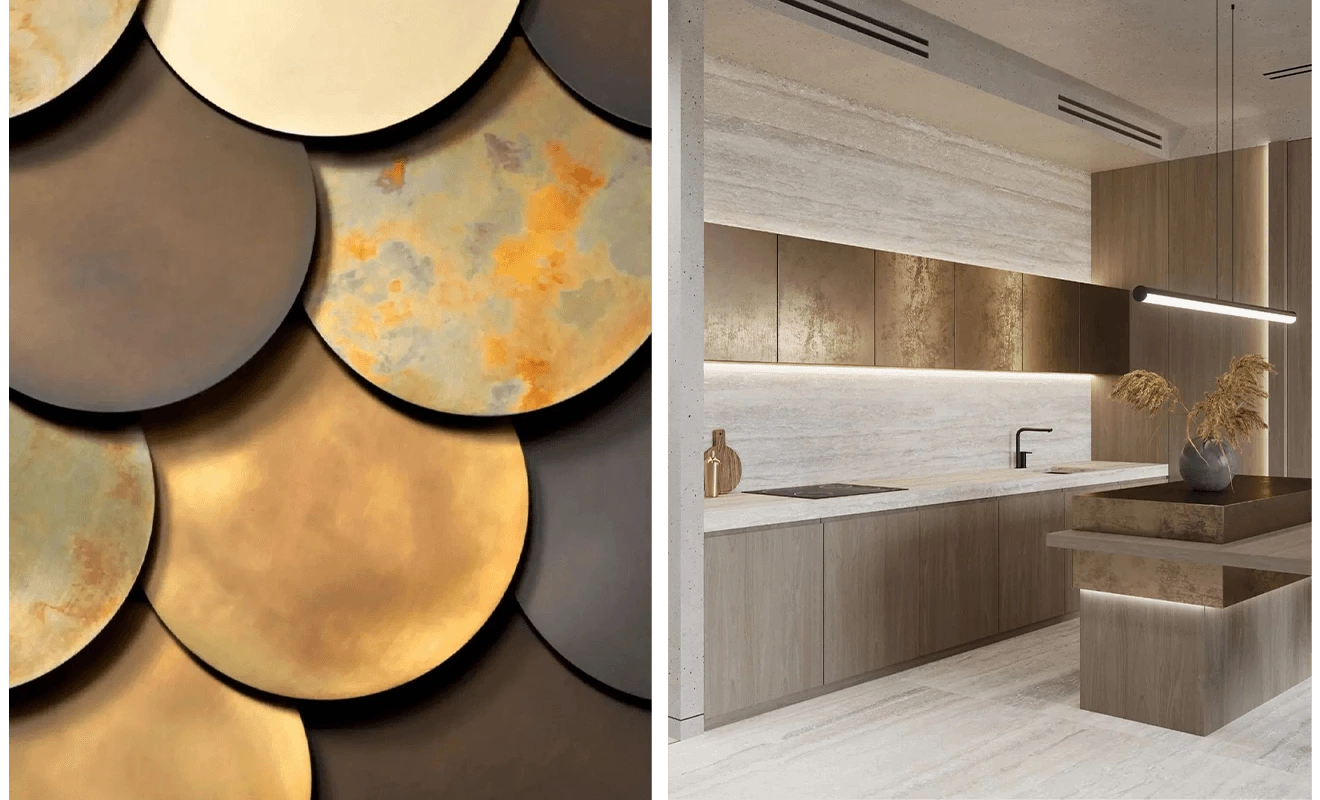
Framed Lines (Bone Structure Detailing)
Think of this as architectural tailoring. Clean, bold lines—reminiscent of a skeletal framework—are inset into cabinet fronts and wall panels. The result is a subtle three-dimensional rhythm that adds structure, vintage charm, and visual clarity. Ideal for classic, transitional, or minimalist interiors looking for a sophisticated edge.

Smoked Wood Finish
Smoked veneer is the secret ingredient in many high-end Italian interiors. It develops a naturally darkened tone and protective carbonized layer by exposing wood to controlled heat, creating rich, moody grain patterns with added durability. It’s resistant to warping, bugs, and fading—aging gracefully with time. Especially popular in oak and eucalyptus species, it pairs beautifully with minimalist or monochrome designs.

Washed & Weathered Finish
To add soul to new wood, this technique mimics years of gentle wear. Think of a sun-washed boardwalk or vintage oak beam, the surface gains a soft patina that feels both rustic and refined through brushing, tinting, and light abrasion. It brings warmth to minimalist spaces and makes luxurious interiors feel lived-in and serene. Frequently used in Italian-style luxury panels and cabinet fronts.

Woven Rattan Inlays
Handwoven rattan brings texture, transparency, and artisanal charm. Each piece undergoes over ten detailed steps—steaming, peeling, bleaching, dyeing, weaving, and finishing—resulting in intricate panels that breathe. Whether used in cabinet doors, bed headboards, or chair backs, rattan adds lightness and a touch of retro elegance. Ideal for vintage-inspired or biophilic interiors that blend nature with design.
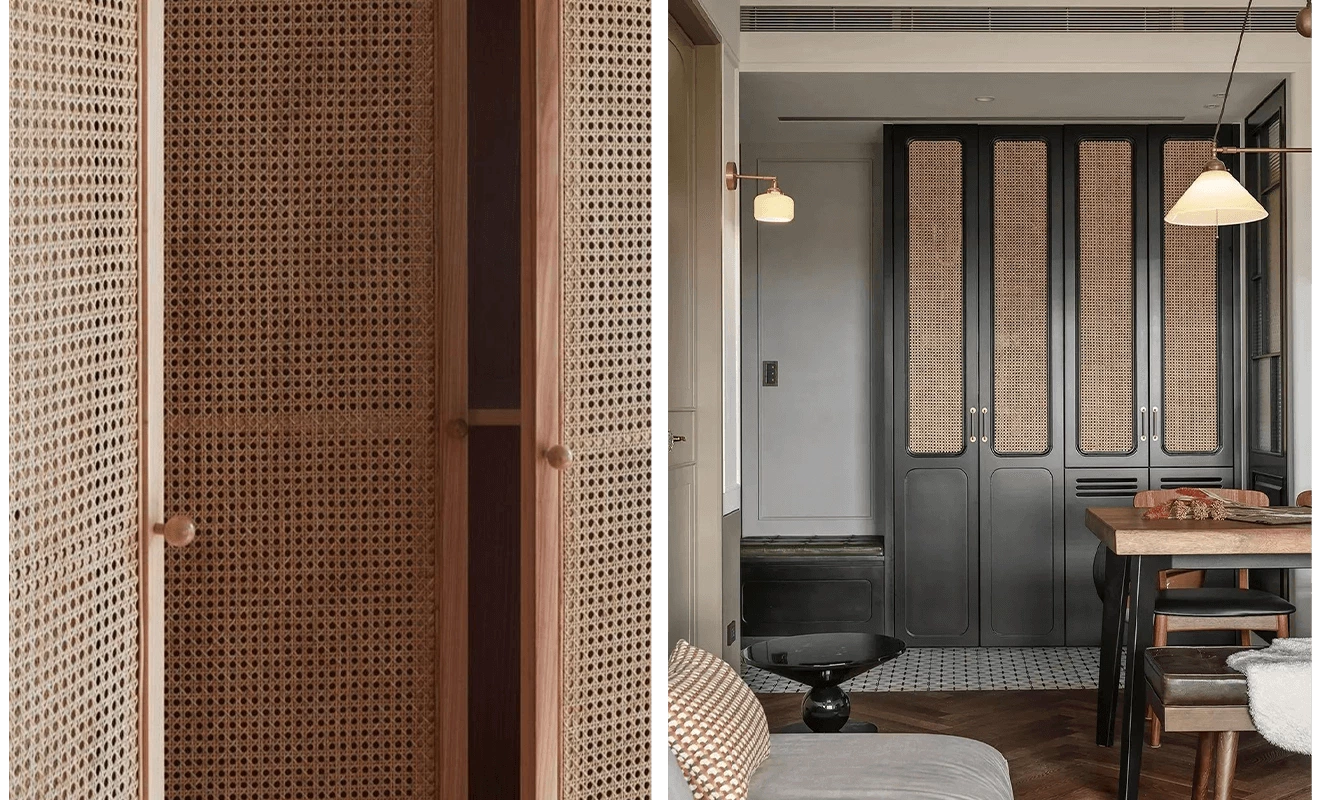
Saw-Cut Texturing
Inspired by the marks left by lumber mills, this technique recreates saw-blade scoring on wood veneer, offering a rustic yet curated feel. These subtle ridges catch light and shadow in an organic way, celebrating the raw beauty of timber. Use it on cabinet faces, interior doors, or statement wall cladding to add instant warmth and character.
